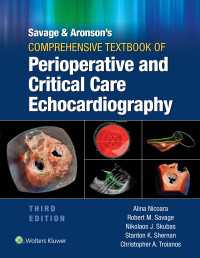Description
Aesthetics after Modernism defends the ongoing relevance of aesthetics to art after modernism. Diarmuid Costello traces the art world's rejection of aesthetics to Clement Greenberg's success in co-opting the discourse of aesthetics, notably Kant's aesthetics, to underwrite a formalist theory of aesthetic value. This has led to Kant's aesthetics being tarred with the brush of Greenbergian formalism; it has also encouraged subsequent critics and theorists to miss the resources in Kant's aesthetics for capturing our cognitive relation to precisely the kinds of art that interest them. There is a tendency to assume that Kant's aesthetics cannot speak to the more cognitive aspects of our engagement with art. Costello offers an interpretation of Kant's aesthetics, grounded in his theory of art, that aims to show otherwise. Conceptual Art provides an instructive test case: here is an art that, at least in its more purist forms, claimed to forgo sensible properties altogether, in favour of direct engagement with ideas. But if Kant's aesthetics can be shown to accommodate our cognitive relation to works with no sensible features relevant to their appreciation, it should be able to accommodate any work of art. Aesthetics after Modernism proceeds in three steps: Part I sets out the internal structure of Greenbergian theory, focusing on the relation between his modernism and formalism, before critiquing each in turn. Part II unpacks the afterlife of Greenbergian theory by considering one sympathetic and one antipathetic response to his modernism and formalism in turn: Michael Fried and Rosalind Krauss for the former, Thierry de Duve and Arthur C. Danto for the latter. Part III returns to Kant's aesthetics, demonstrating that Kant's account of art as an 'expression of aesthetic ideas' is well placed to address the semantic content of genres such as Conceptual Art more commonly thought to exceed its grasp.
Table of Contents
AcknowledgementsPreface IntroductionPart One: Greenberg's Modernist AestheticChapter I Modernism and Formalism: The Internal Structure of Greenbergian TheoryChapter II: Modernism and Formalism: The Internal Limits of Greenbergian Theory Part Two: The Legacy of Greenbergian TheoryChapter III: The Afterlife of Medium-Specificity I: Fried on 'Theatre' and 'Theatricality'Chapter IV: The Afterlife of Medium-Specificity II: Krauss on the 'Post-Medium Condition' Chapter V: The Afterlife of Formalist Criticism I: de Duve on Judging 'This is Art'Chapter VI: The Afterlife of Formalist Criticism II: Danto on the 'Aesthetics of Form' Part Three: Kant's Theory of Art ReconsideredChapter VII: Kant's Aesthetics and the Challenge of Conceptual Art Chapter VIII: The Scope of Kant's Theory of Art Chapter IX: The Actuality of Kant's AestheticsBibliography & Endnotes
-

- 洋書電子書籍
- 周術期経食道心エコー総合テキスト(第3…







